What do you use to lead your horse to the ring?
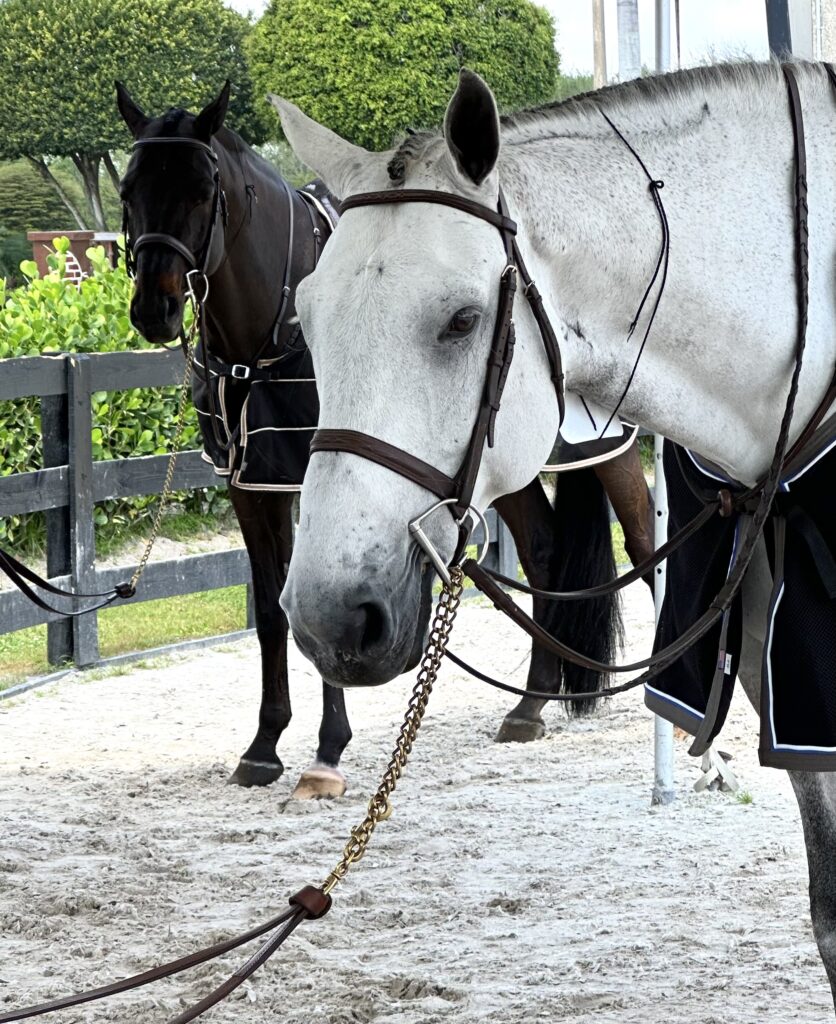
- leather lead, often called a lead shank, with chain
- leather lead with the chain covered in leather
- leather lead with no chain
- leather lead with a split chain
- lead rope
- a pocket full of treats, hopefully they follow you…. 🤔 (just kidding!)
It has been a few years since I was a groom leading horses to the ring. “Back in the day”, we all had our own leather lead shanks with a chain specifically for taking horses to the ring. The leather part was doubled up and knotted under the chain. Fancy grooms had a nameplate on theirs.
We took great pride in our shanks which included polishing the chain. This had to be done almost every time you used it, especially in Florida because the humidity would tarnish it quickly. The method I used was to dunk the chain straight into a bottle of ammonia. Ammonia is a very strong all purpose cleaner that would make your eyes water if you smelled it. Its normal purpose in the barn was to add a few drops to your tack water to get rid of the sticky tack soap buildup. The snap was usually just a little too big for the opening at the top of the bottle, but it would fit if pushed. I would slosh it around for a few shakes, then remove it and rinse it in water quickly. If it wasn’t rinsed, it would oxidize and look worse than before you started. After drying it off with a towel, it was polished with Brasso or Never Dull wadding which came in a little round tin. It was a personal preference, but everyone had one or the other in their grooming box. The final step was polishing it with a dry towel and in a few seconds, your chain gleamed. None of this was mandatory, but for everybody I knew, it was a matter of pride.
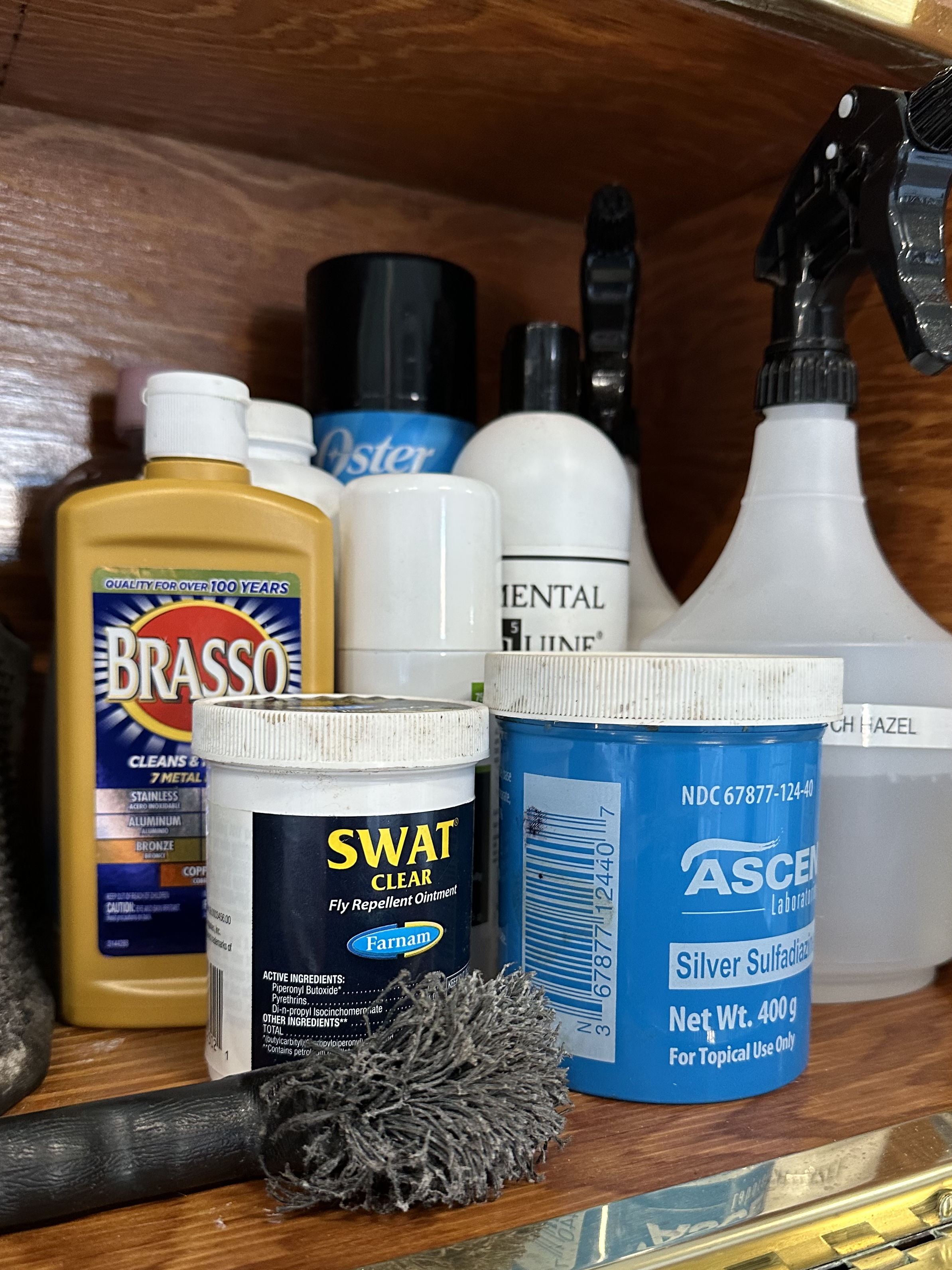
Most of us doubled the chain back on itself because it was really too long to be practical when just snapped to the bit and it also didn’t feel great in your hand when leading. The chain is long because it is designed to be used with a halter when you need more control than a normal lead rope can give you. It is long enough to go over the nose and up the far side of the halter to the ring just below the horse’s eye. When used in this way, the long chain makes sense. When this same lead shank is used as a ring shank, the chain is too long, so most of us got creative and looped it. It looked neater and worked better for our purpose.
The only time we didn’t follow that routine was when it was raining. In that case, along with the raincoat, mud boots, and rain sheet, most of us would choose to save our shank from the rain and use a lead rope instead. Before the long lead ropes that come in dozens of colors and are so popular today, the only ropes we had were short white cotton ropes with small snaps. They were all we had, but being so short, not as safe and useful as the ones we use now. I can remember that rainy day resigned feeling of “are we really going to show in this?”, and snapping my little (not so white anymore) rope onto the bit in a small demonstration of rebellion, and heading to the ring.
Now to get to the point of this story-
I can’t remember who, but someone told me, or made me aware, that looping the chain was dangerous. As careful as we all are, there is the chance your horse can get a hoof or leg caught in the loop of the chain and it’s not hard to imagine how badly that could go. If a horse gets caught in the chain, it could be deadly. We all know that saying, “if horses can find trouble, they will”. This accident is preventable.
What has surprised me and prompted me to write this, is how many people still do this. Every day, I see people leading horses with some kind of loop, from lazy hunters to FEI jumpers. One popular version seems to be running the chain through the left side of the bit, under the chin, through the other side of the bit, and snapping it together underneath. This takes care of the extra chain length, but creates a perfect hoof-sized opening. There also have been posts on Facebook highlighting the FEI jog, Groom’s class winners, and Nation Cup team members in Wellington. They all include some pictures of dangerous chains. Seeing all this, I can only guess that people don’t understand the danger.



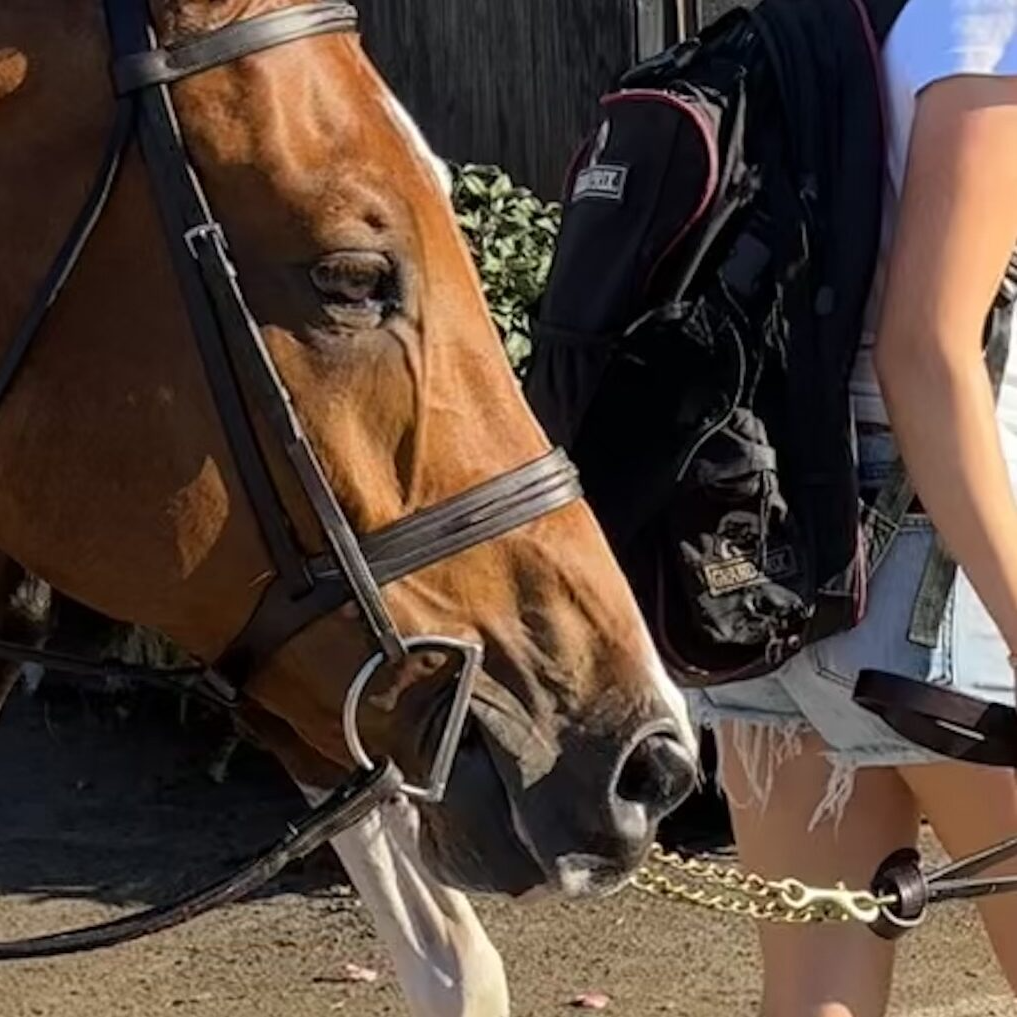
There are several good alternatives to looping your chain or creating a triangle opening. Pick a safe one you are comfortable with and set a good example.
- leather lead with chain (not looped)
- leather lead with chain covered in leather (not looped). You don’t see this version as much, but I think it would feel better in your hand than a regular chain would when leading.
- leather lead with a snap, no chain
- lead rope
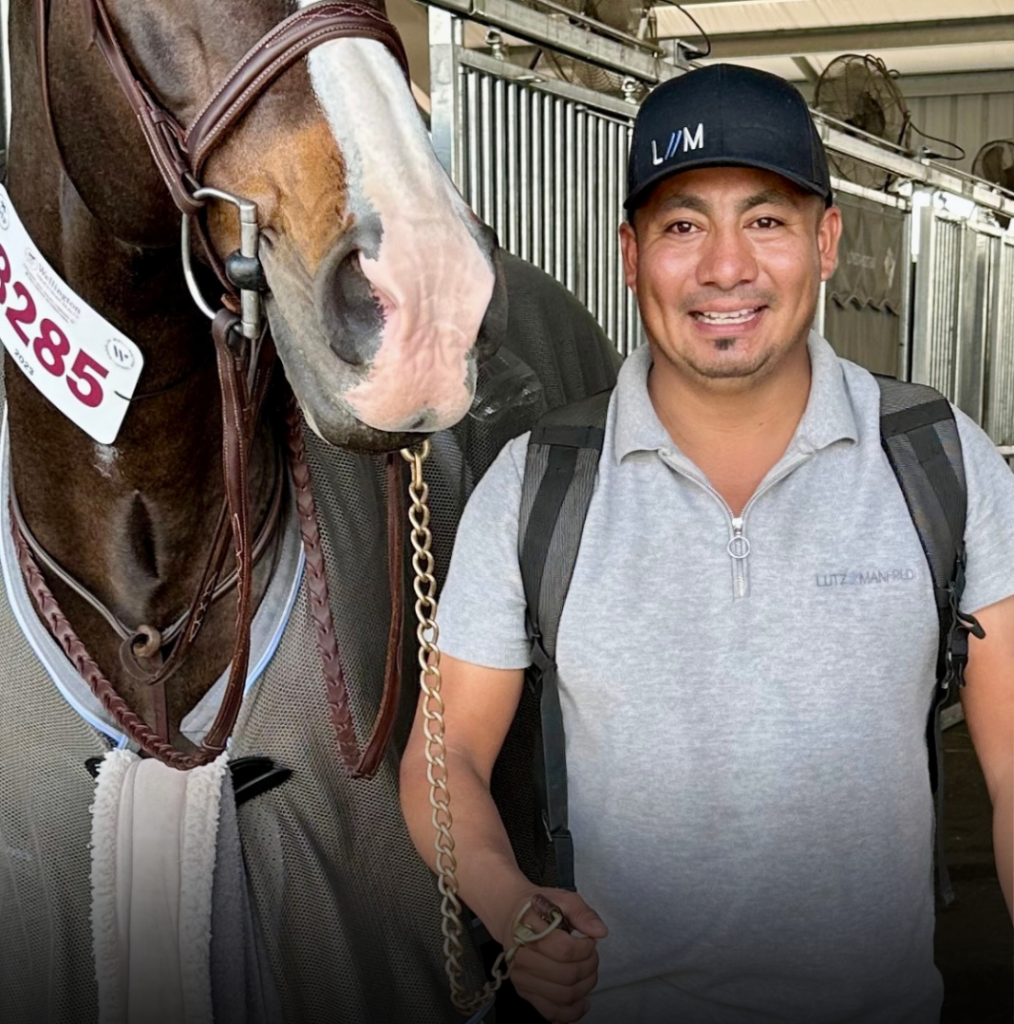
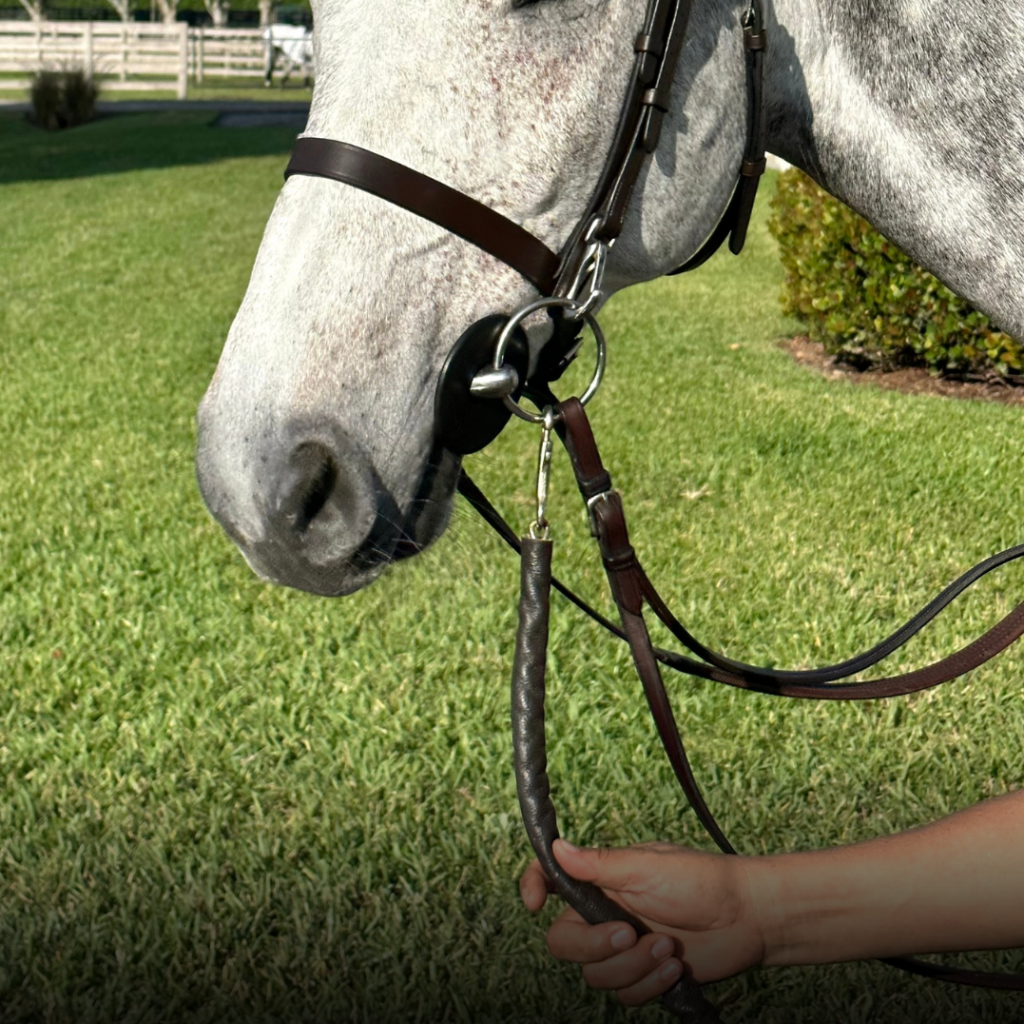
Chain covered in leather (not looped)
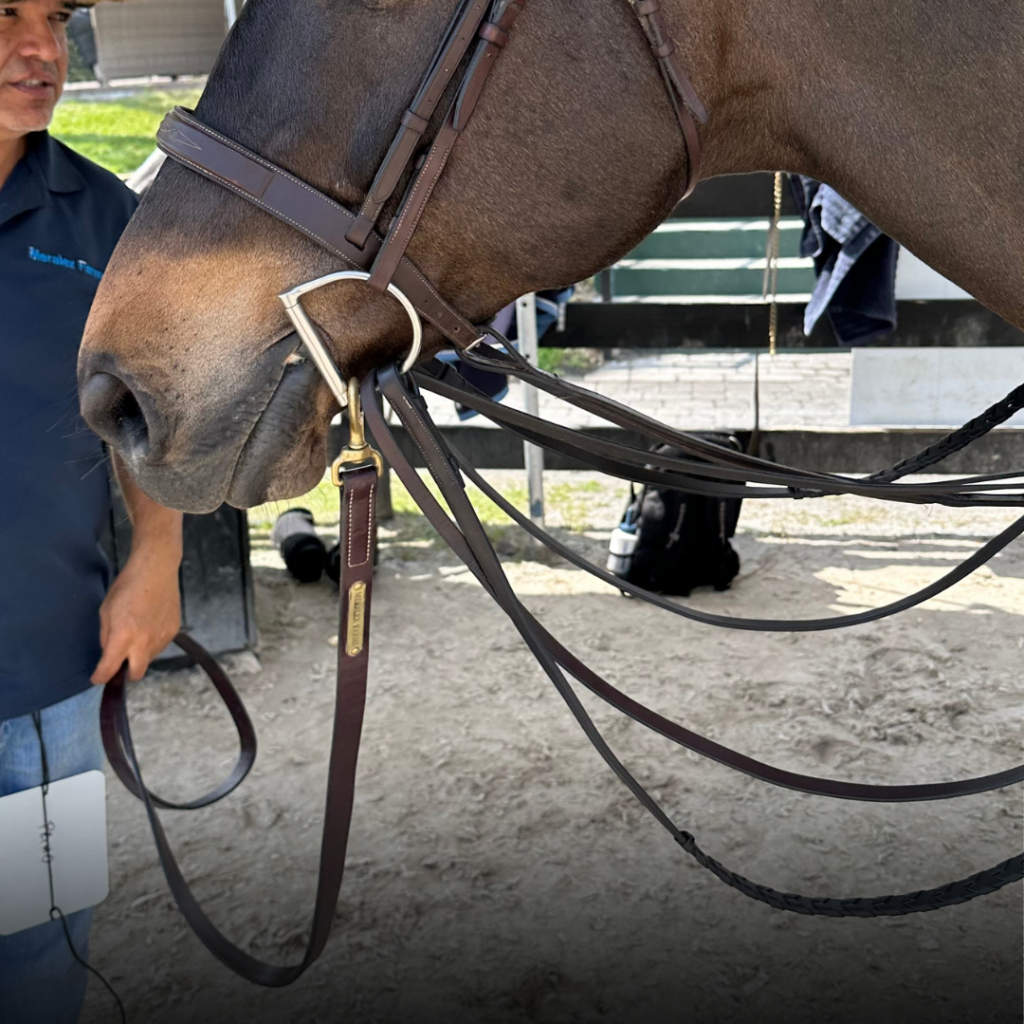
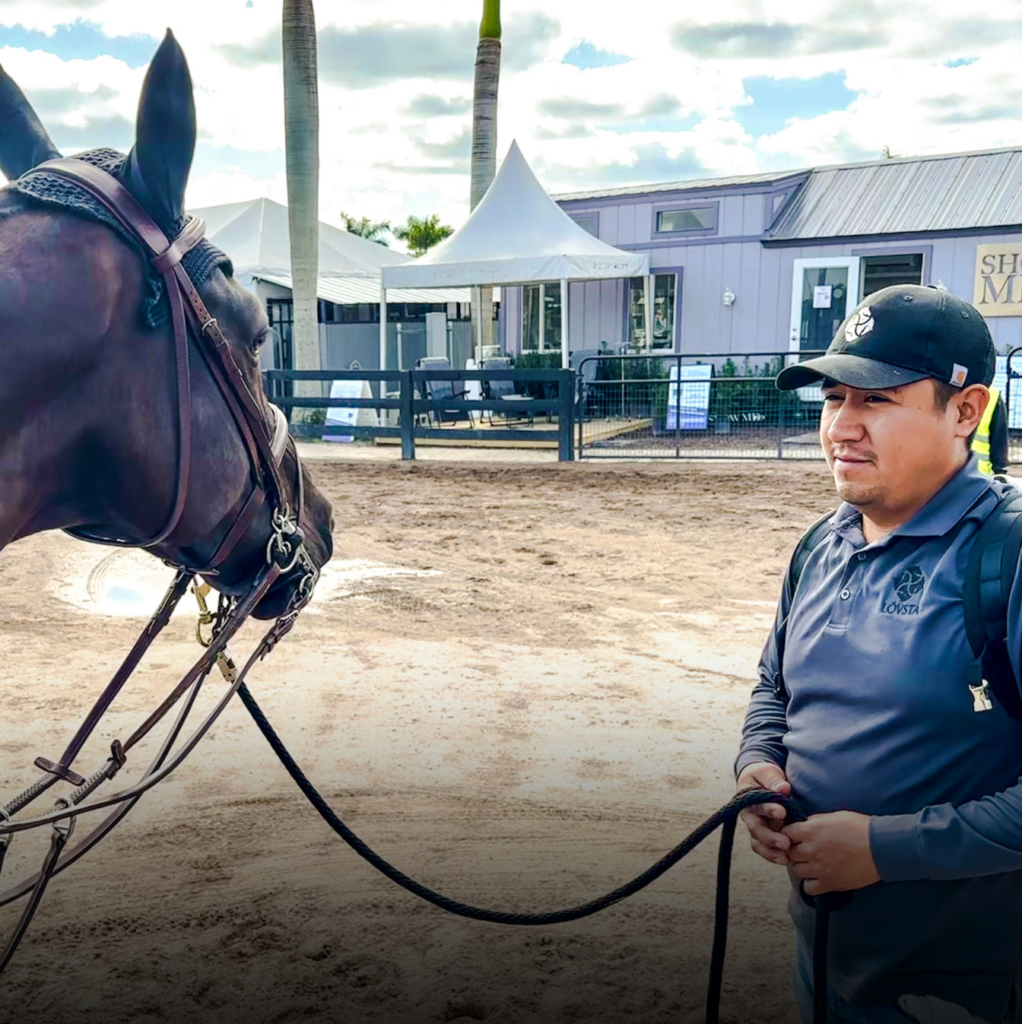
Nobody starts out caring for horses knowing everything. We have many teachers. We learn from our own experiences, from coworkers, professionals in the sport, reading, school, and from the horses we care for. We owe it to them and to ourselves to work with the confidence of what we know, but at the same time be open to learning new ways of doing things.
I’ve been a lifelong equestrian and am still an active professional in the industry. I split my time between Wellington FL, Vermont, and Colorado. I’ve had the opportunity to work, study, and travel with some of the top barns in the United States and Europe. I’ve always valued horsemanship and am grateful for the experience I’ve gained working with some of the best in our sport – riders, trainers, vets, blacksmiths, and fellow grooms.
Since 2013, I’ve been involved with the USHJA Emerging Athletes Program as a stable manager and a member of the USHJA EAP Committee. I hope that as an EAP stable manager, and now as a contributor for Horse Grooms, I can pass along as much knowledge as possible, not only to the next generation of equestrians, but to every horse-loving person who is open to learning.
You can follow me on Instagram @buckets_to_brushes.
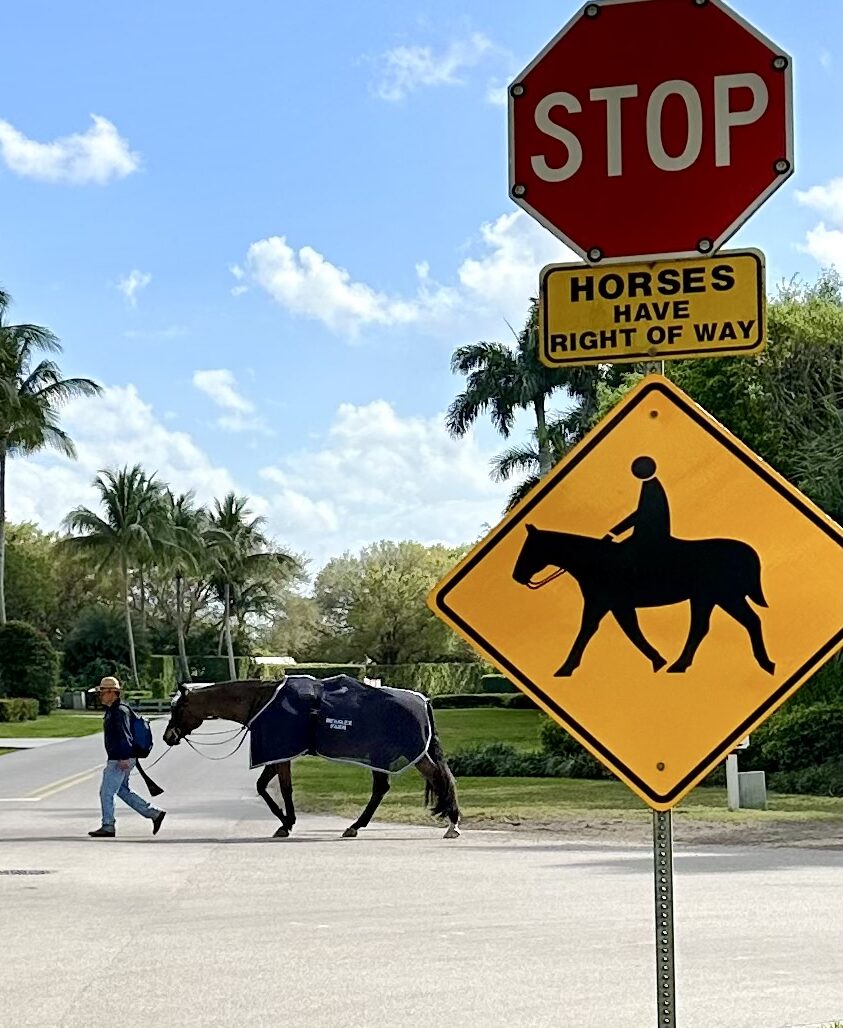
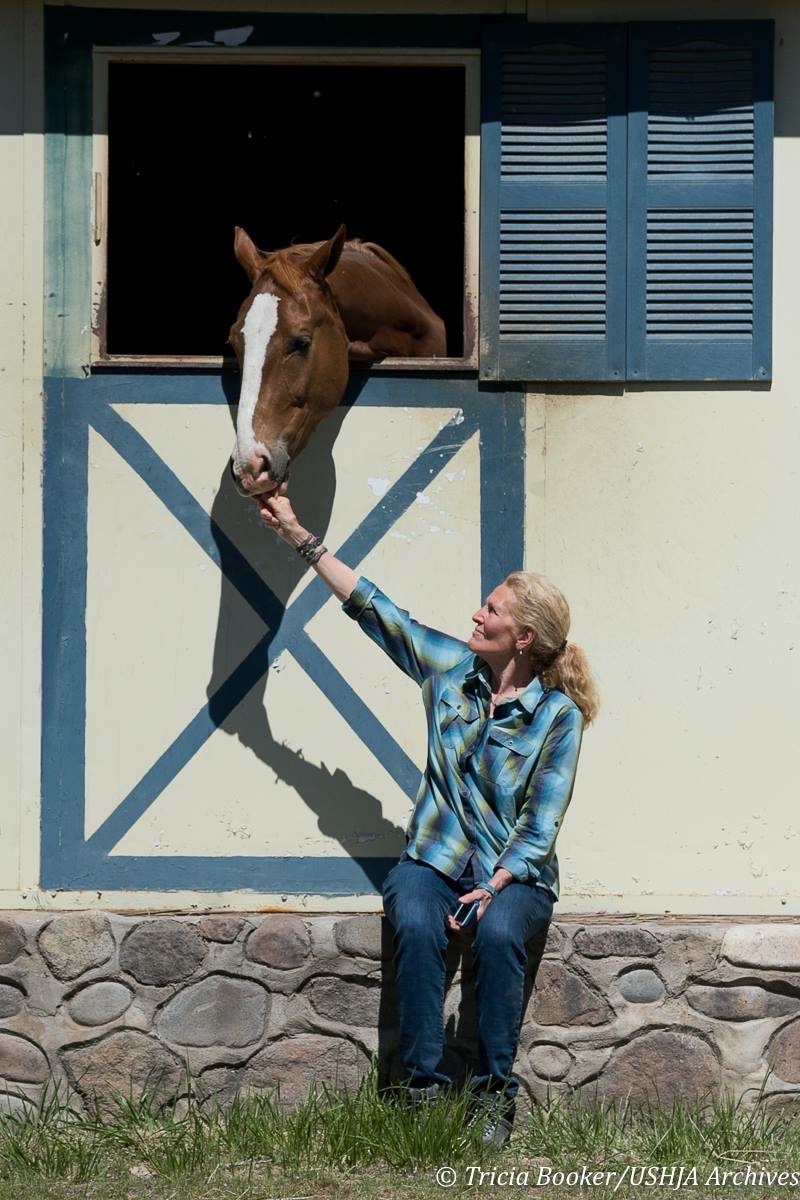

No loop. Shiny chain.
Leadshank in the rain.